Today Current Affairs: 13th October 2022 for UPSC IAS exams, State PSC exams, SSC CGL, State SSC, RRB, Railways, Banking Exam & IBPS, etc
Table of Contents
Justice D Y Chandrachud : Chief Justice Of India
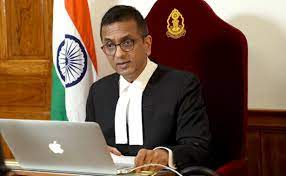
Chief Justice of India UU Lalit recommends Justice D Y Chandrachud as next Chief Justice of India.
- Chief Justice Lalit’s recommendation to the government would start the process for appointment of Justice Chandrachud as the 50th Chief Justice of India.
- If the government approval comes through, Justice Chandrachud would be the first second-generation CJI.
- His father, Justice Y.V. Chandrachud, was the 16th CJI and one of the longest serving.
- Chief Justice Lalit is scheduled to retire on November 8 at the end of a 74-day tenure as top judge.
- Justice Chandrachud is expected to be sworn in and assume charge as Chief Justice of India from November 9.
- He has a tenure of two years as Chief Justice until his retirement on November 11, 2024.
- Justice Chandrachud was appointed judge of the Supreme Court on May 13, 2016.
- He was before that the Chief Justice of the Allahabad High Court from October 31, 2013.
- Justice Chandrachud began his career as a judge in the Bombay High Court on March 29, 2000 until his appointment as the Chief Justice of the Allahabad High Court.
Collegium System:
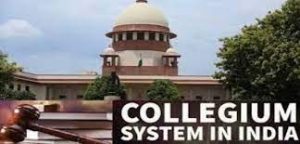
During Justice Chandrachud’s two-year tenure, the collegium he will head will potentially make as many as 18 recommendations for appointment of judges to the Supreme Court. It will be an unusual collegium: instead of five members, it will have six.
- The collegium system of appointing judges evolved through three significant verdicts of the Supreme Court, known as the First, Second, and Third Judges Cases.
- The Constitution of India does not mention the collegium system; however, these three cases established that the collegium headed by the Chief Justice of India will have primacy in the appointment of judges to the higher judiciary.
- The Supreme Court collegium is headed by the CJI and comprises four other senior-most judges of the court.
- This collegium makes recommendations to the government for appointment of judges to the SC and of Chief Justices of High Courts, and the transfers of HC judges.
- A separate three-member collegium, headed by the CJI and comprising the two senior-most judges of the SC makes recommendations for appointment of judges to HCs.
Background of Collegium system:
- First Judges Case (1981): It declared that the “primacy” of the Chief Justice of India (CJI)’s recommendation on judicial appointments and transfers can be refused for “logical reasons.”
- The ruling gave the Executive primacy over the Judiciary in judicial appointments for the next 12 years.
- Second Judges Case (1993): SC introduced the Collegium system, holding that “consultation” really meant “concurrence”.
- It was not the CJI’s individual opinion, consultation with the two senior-most judges in the SC.
- Third Judges Case (1998): SC on President’s reference expanded the Collegium to a five-member body, comprising the CJI and four of his senior-most colleagues.
5+1 collegium:
- Given the order of seniority, a potential CJI will enter the Chandrachud collegium only in May 2023. However, Justice Khanna will be the sixth member of the collegium from November 9, 2022 itself.
- This happened earlier in 2007 — when then CJI K G Balakrishnan took the top office, the collegium he headed did not have a potential CJI candidate. Justice S H Kapadia, who was next in line to be CJI, was invited to the collegium as the sixth member.
World University Rankings 2023:
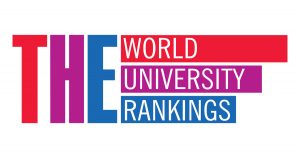
The Times Higher Education (THE) rankings 2023 were released.
- Earlier, QS World University Ranking 2023 was released.
Highlights of the Ranking:
- The parameters based on which the institutes are ranked are teaching (30%), research (30%), citations (30%), international outlook (7.5%), and industry outcome (2.5%). In teaching and research, 15% weightage each is based on a reputational survey.
Global Top Performer:
- The University of Oxford has emerged as the best institute among 1,799 universities from 104 countries.
Indian Institutions:
- Rankings: India is the sixth most represented country in the 2023 rankings with 75 ranked universities.
- The Indian Institute of Science (IISc) is at the top position among Indian institutes, for its performance score for teaching and research.
- Globally, the IISc is placed in the 251-300 band.
- IISc was the top-ranking Indian Institute in the 2022 rankings as well.
- The second position among Indian institutions has been taken by Himachal Pradesh based Shoolini University of Biotechnology and Management Sciences (351-400 overall), which made its debut in the rankings.
- IIT Ropar which was the second highest ranking Indian institute in 2022 rankings, slipped to 6th position.
- The third position is backed by Tamil Nadu’s Algappa University, a public institution.
Times Higher Education:
- THE, formerly known as The Times Higher Education Supplement (THES), is a magazine reporting specifically on news and issues related to higher education.
- The Times Higher Education World University Rankings include 1,799 universities across 104 countries and regions, making them the largest and most diverse university rankings to date.
Beti Bachao Beti Padhao:
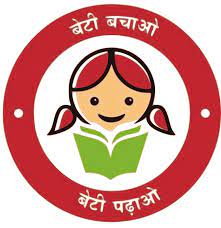
Central government announced the inclusion of the skilling of girls in non-traditional livelihood (NTL) options in the Beti Bachao Beti Padhao’ scheme.
- Non-Traditional livelihood: It includes sectors and jobs where the participation of women is and has historically been conventionally low or absent.
- Increasing the enrolment of girls in secondary education, particularly in STEM (Science, Technology, Engineering, Mathematics) subjects.
- Non-traditional vocations: Girls will be given skill training in non-traditional vocations, making them torchbearers of a women-led Aatmanirbhar Bharat (self-reliant India).
New aims in the scheme:
- Secondary education: Ensuring a 1% increment in enrolment at the secondary level
- Skilling: girls and women every year
- Raising awareness: about safe menstrual hygiene
- Child marriage: Promulgating elimination of child marriages
2nd UN World Geospatial International Congress:

PM Narendra Modi recently addressed 2nd UN World Geospatial International Congress. It is being held in Hyderabad.
- The goal of this year’s UNWGIC is to promote a broad dialogue on global geospatial information management with all relevant governments, non-governmental organisations, academia, and the private sector.
- Theme: The theme of UNWGIC 2022 is ‘Geo-Enabling the Global Village: No one should be left behind’.
- It was hosted by the ministry of science and technology of the government of India.
United Nations World Geospatial Information Congress (UNWGIC):
- The United Nations Global Geospatial Information Management (UN-GGIM) convened the conference on UNWGIC 2022 and was organised by the United Nations Department of Economic and Social Affairs.
- It is conducted every four years with the objectives of enhancing international collaboration among the Member States and relevant stakeholders in Geospatial information management and capacities.
- The first UNWGIC was organized by China in October 2018
6th Meeting Of The India-Norway Joint Working Group On Higher Education:
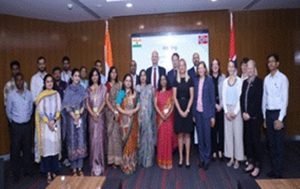
India recently hosted the 6th meeting of the India-Norway Joint Working Group on Higher Education in New Delhi.
- The Joint Working Group was established to monitor and oversee the implementation of the MoU on Cooperation in the field of Higher Education signed between India and Norway on 25th April, 2022.
- The two sides reviewed the progress made under the Indo-Norwegian Cooperation Programme developed under the ambit of the previous India-Norway MoU signed in 2014.
- They deliberated upon overall higher education policy and priorities, student/faculty mobility and cooperation in the field of skill development.
- India’s relations with countries in Central Europe (CE) remained on a steady upward track characterised by warmth and progress in 2021-22, according to the Ministry of External Affairs (MEA).
- Rooted in cultural ties, relations with Central European countries have been free from any major irritants.
- India has received support from these countries at various multilateral fora.
- Regional groups within CE like the Visegrad Group (Czech Republic, Hungary, Poland and Slovakia) and the Nordic group (Sweden, Norway, Finland, Denmark, Iceland) also provide platforms for plurilateral exchanges with India.
India’s Growth Forecast:

The International Monetary Fund (IMF) recently trimmed its FY23 growth forecast for India by 60 basis points from its July projection of 7.4 per cent to 6.8 per cent, its steepest cut for any major economy barring the US.
- IMF’s move follows the World Bank slashing its FY23 growth projection for India to 6.5 per cent recently from 7.5 per cent predicted earlier.
- India is projected to grow at 6.8% in the current fiscal year, following 8.7% growth in fiscal year that ended March 31 as per figures released in the IMF’s October 2022 World Economic Outlook.
- Growth rate for this year for India has been revised downward by 0.6 percentage points relative to the IMF’s June 2022 forecast, following a weaker output in the second quarter, and subdued external demand.
- The forecast for the next fiscal year remains unaltered at 6.1%.
- The IMF has projected 6.9% consumer price inflation this year and 5.1% next year.
- For the world as a whole, growth will slow down from 6.0% in 2021 to 3.2% in 2022 and 2.7% in 2023.
Marathon:

Kenya’s Eliud Kipchoge, who is regarded as the world’s greatest marathon runner, broke his own world record by 30 seconds at the Berlin Marathon.
- It was a major improvement over his 2:01:39 set four years ago in Berlin.
- The Berlin marathon course is considered the fastest in the world because of the flat smooth roads.
- The word marathon comes from a Greek legend that tells the story of Pheidippides, who ran from the Plains of Marathon all the way to Athens in 490 BCE to spread the news of the Greeks’ victory over the Persian army.
- The running race based on the story was first introduced at the Olympic Games in 1896.
- It is a race in which people run on roads over a distance of 42 kilometres or about 26 miles.
- It is an activity that takes a long time to complete and needs a lot of energy and determination.




